


























The 2024 Atlantic Hurricane Season is June 1st through November 30th, with peak season beginning in September. Communities can cope with and recover from the aftermath of a hurricane if residents and businesses plan and prepare for emergencies like hurricanes. We urge our residents and visitors to take an active role in hurricane preparedness.
This guide offers information to help you prepare for hurricane season and protect yourself should we be affected by a storm. Being prepared means having a plan and knowing what to do before, during, and after a hurricane moves through an area. Proper preparation is not only the most important step we can take to mitigate damage and loss of life, it is also the most effective thing each of us can do to protect our homes, businesses, and loved ones.
It is essential that you and your family are ready before a storm approaches.
WATCH VS WARNING

Hurricane watch: Hurricane conditions (sustained winds of at least 74 mph) are possible in the aea within 48 hours.
Hurricane warning: Hurricane-force conditions (sustained winds of at least 74 mph) are expected in your area in 36 hours or less.

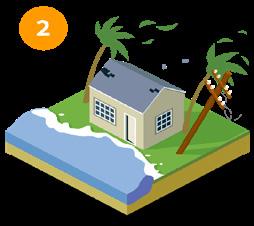
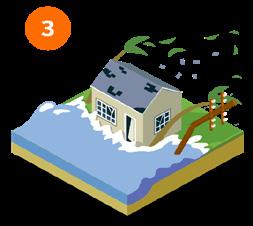


Category 1
Winds: 74 - 95 mph
Very dangerous winds will produce some damage: Well-constructed frame homes could have damage to roof, shingles, vinyl siding and gutters. Large branches of trees will snap and shallowly rooted trees may be toppled. Extensive damage to power lines and poles likely will result in power outages that could last a few to several days.
Category 2
Winds: 96 - 110 mph
Extremely dangerous winds will cause extensive damage: Well-constructed frame homes could sustain major roof and siding damage. Many shallowly rooted trees will be snapped or uprooted and block numerous roads. Near-total power loss is expected with outages that could last from several days to weeks.
Category 3
Winds: 111 - 129 mph
Devastating damage will occur: Well-built framed homes may incur major damage or removal of roof decking and gable ends. Many trees will be snapped or uprooted, blocking numerous roads. Electricity and water will be unavailable for several days to weeks after the storm passes.
Category 4
Winds: 130 - 156 mph
Catastrophic damage will occur: Well-built framed homes can sustain severe damage with loss of most of the roof structure and/or some exterior walls. Most trees will be snapped or uprooted and power poles downed. Fallen trees and power poles will isolate residential areas. Power outages will last weeks to possibly months. Most of the area will be uninhabitable for weeks or months.
Category 5
Winds: Over 157 mph
Catastrophic damage will occur: A high percentage of framed homes will be destroyed, with total roof failure and wall collapse. Fallen trees and power poles will isolate residential areas. Power outages will last for weeks to possibly months. Most of the area will be uninhabitable for weeks or months.

Protect your home by securing windows and doors with storm shutters or board up windows with plywood where wind can enter. Bring in any outdoor furniture/items that could become airborne. Turn refrigerator to coldest temperature setting and lower A/C (turn their circuit breakers off after power goes out). Unplug electronics and cover with waterproof coverings. Turn off BBQ propane tanks. Take pictures of your home both inside and outside for insurance purposes.



Prior to a storm, stock up on at least three (3) days worth of drinking water per person in case water becomes contaminated in your area; don’t forget drinking water for your pet(s). Water can also be collected in clean aluminum or plastic containers and stored in a cool location, and you can also fill bathtubs with water for non-drinking use. Freeze water jugs and fill ice chest. In case water becomes contaminated and a BoilWater notice is issued, you will have to boil water, even if it is filtered, vigorously for 3-5 minutes and let cool before drinking.
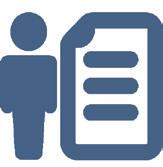
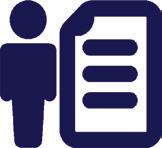
Keep an inventory of your household items. Photo/video contents and record the make, model, serial number, and keep information in a safe place or send by mail or electronically to a friend/relative who lives out of town, and out of the storm’s path. Compile important documents (insurance policies, bank documents, mortgages, phone numbers of family and friends, medical information etc.) Make a copy and store/place important documents and photos in waterproof plastic bags. Obtain cash in case Automatic Teller Machines (ATM) are out of service.

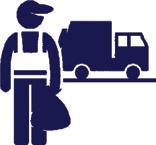
Once a watch/warning has been issued, the City’s collection services may be suspended and Solid Waste Authority facilities may be closed early in preparation of the storm. Therefore, do not begin construction projects that produce debris or any mass tree trimmings as this places a tremendous burden on the collection and disposal processes and there is not enough equipment or manpower to handle the additional material before the storm makes landfall. You could put not only yourself at risk, but your neighbors as well. Therefore, do not take materials to the curb, transfer stations or landfill.


All residents living in a manufactured/mobile home must evacuate in a hurricane warning when an evacuation order has been issued. Even tropical stormforce winds can topple these types of homes. If possible, arrange to stay with family or friends who live inland in a non-evacuation area.
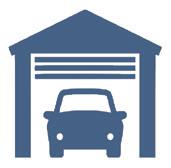
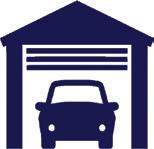
Fuel up vehicles and propane tanks; obtain fuel for generators. Move vehicle(s) into a garage or next to a building; avoid parking near trees and utility poles. If you have an electric garage door opener, find the manual release lever and learn how to operate it in case of power outage. Brace garage door.


Do not begin any tree trimming or clean-up activities during a storm watch/warning as trimmed limbs and branches could become projectiles if not disposed of properly. Fallen trees and uncollected debris stacked along roads are among the biggest obstructions, along with traffic, wind and flooding, when attempting to restore power following a Hurricane. Tree trimming should be completed BEFORE hurricane season.
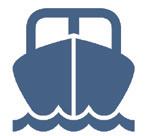
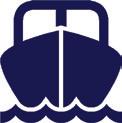
Know your responsibilities, tie down and stabilize your boat securely. Keep your vessel registration number and location with you. Never try to ride out a hurricane/storm in your boat. Marinas will close when winds reach 39 mph. Drawbridges will not open for boats when an evacuation has been ordered.

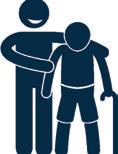
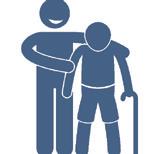
• Make the necessary arrangements for the elderly , frail or disabled people who may need special assistance from family members, friends or social service agencies.
• Decide NOW where you would go if ordered to evacuate.
• Notify your health agency where you will be during a hurricane.
• If you have to evacuate, take medications, written instructions regarding your care; bedding, walker, wheelchair, cane or other special equipment.
• If you require hospitalization, you must make prior arrangements with your physician.
• Obtain assistance as necessary.
• Check with your supplier regarding emergency plans if you require oxygen.

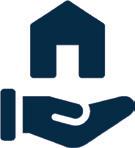
Palm Beach County has established a Special Needs Shelter Program to provide for citizens with certain medical conditions during a major emergency. The Special Needs Shelter is a facility with physicians and nurses on staff. It has auxiliary electrical power, is wind resistant, and not flood-prone. The shelter is not a medical facility and provides limited services. The shelter does not provide medication, dialysis, oxygen or oxygen concentrators. General food is provided. For further information about the Special Needs Program, call 561-712-6400 and ask to speak to the Special Needs Coordinator.
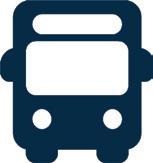
If you do not qualify for the Special Needs Program and need transportation ONLY to a shelter, the County will provide transportation but you MUST be Pre-Registered and live in an evacuation zone or mobile/manufactured home, be physically handicapped or have no other means of transportation. Call Palm Tran Connection to register at 561-649-9838.

Never empty your pool before a major storm. Adequate water levels help hold a pool in place when heavy rains raise the local water table, and prevent it from cracking. To help manage flooding, drain only one to two feet of water from your pool. Turn off the pump and motor, and cover them with plastic to prevent them from getting soaked. Shock your pool with chlorine to prevent bacteria build-up.
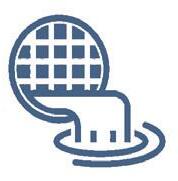
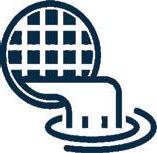
Ensure the storm drain inlets in the roads and parking areas in your community are not clogged with a build-up of leaves or debris on the surface. During a storm, drains and catch basins can easily get clogged due to excess water and/or debris, resulting in traffic impairments and other hazardous conditions. If you see that any drains on public roads are blocked, please contact the City’s Public Works Department at 561-642-2071.


Risk Shelters cannot accept pets because of health and safety regulations. Service animals for people with disabilities are an exception. Have a plan for your pets if you are evacuating and not taking them with you. Have them stay with friends/family who are not evacuating or board them with a local facility or your veterinarian.
The Pet Friendly Shelter is located inside the West Boynton Recreational Center at 6000 Northtree Boulevard, Lake Worth, FL 33463 and is only available to Palm Beach County residents who reside in a mandatory evacuation zone, mobile home or sub-standard housing. Proof of residency will be required. Space is limited and pre-registration is required. Visit www.pbcgov.com/animal.

During and after a storm, current information and special updates will be posted on our website and social media platforms. Residents can stay connected and informed by following the City of Greenacres Facebook, X and Nextdoor page, or visit greenacresfl.gov
FULL ACTIVATION: All lead and support agencies are notified. The Emergency Operations Center (EOC) is staffed by Division of Emergency Management (DEM) personnel, the Executive Policy Group (EPG), all Sections and Branches, their staff, as well as State and Federal representatives.
PARTIAL ACTIVATION: Selected Emergency Operations Center (EOC) staff are notified. The EOC is staffed by Division of Emergency Management (DEM) personnel, their staff, and outside agencies as required to meet the operational need of the incident.
ENHANCED ACTIVATION: The Division of Emergency Management (DEM) transitions to this level for incidents or special events that have the potential for escalation. Notifications are made to appropriate Division and County personnel and support organizations that may be required to take action as part of their normal responsibilities.
NORMAL ACTIVATION: This is the normal day-to-day operational level for the Division of Emergency Management (DEM) and the County Warning Point (CWP), which are continuously monitoring local, regional, national, and international events, evaluating threats, and analyzing their impact on Palm Beach County.

You can download the DART App for your smart phone. The App includes information regarding evacuation zones, shelter open/closed status, damage assessment information, and many other features to help you during a disaster.
Yes. Palm Beach County’s hurricane response and recovery plans are well seasoned and their staff is prepared. The County and the cities have developed a well-coordinated response to provide public safety and health services to those areas affected by a hurricane.
FPL representatives are at the PBC Emergency Operations Center (EOC) and the County coordinates power restoration with them. State and federal response agency representatives will be housed at the EOC before, during, and after the storm to provide assistance to us. PBC has dedicated staff whose sole purpose is to save lives and protect property after a storm and get us back to full operation as soon as possible.
Palm Beach County has several resources for obtaining accurate and important information. The Division of Emergency Management administers the www.ReadyPBC.com website and www. PBCgov.com to provide up-to-date information.
1 2 3
4 Be Informed
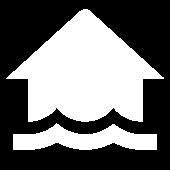
Did you know that some areas in Greenacres are potentially prone to some amount of flooding from excessive rainfall? Property owners need to know their flood risk. The latest FEMA National Flood Hazard Layer (NFHL) provides the flood hazard data to support the National Flood Insurance Program. You can use this information to better understand your level of flood risk and type of flooding.
If your property is within a flood zone and you have a mortgage, there is a chance your lender may require you to obtain flood insurance. The City of Greenacres Development and Neighborhood Services Building Division has the latest map panels that are in effect, and staff is available to answer questions on flood zones and base flood elevation determinations.
For additional information, please contact the Building Division at 561-642-2059, or you can access the FEMA Flood Map Service Center online at https://msc.fema.gov/portal/home.

MAP LEGEND City Boundary
Subject to 1% Annual Chance of Flood Hazard
The information contained herein is believed to be true and accurate; however, it is not warranted or certified accuracy. The City shall not be held liable for errors contained herein or for incidental consequential damages in connection with the use of this material. Any use or re-use of this information will be at the users own risk.


Evacuation centers should only be considered as a shelter of last resort. Not all shelters will be opened at the same time. Once an evacuation order has been issued, stay tuned to local TV and radio stations for shelter opening announcements. Check YOUR shelter information and locations and plan accordingly. If you have pets, see Page 5 for pet safety/shelter information.
• Evacuations orders are implemented in mobile home parks which are mandatory evacuation zones in the City of Greenacres.
• If you have medical needs, and need a Special Needs Shelter, call 561-712-6400 to PreRegister or visit https://discover.pbcgov.org for an online application.
• EMS Units transport pre-registered special needs citizens to critical care shelter.
• Register with Palm Tran Connection for the special Transportation Assistance Program. Call 561-649-9838 or 877-870-9849 to pre-register.
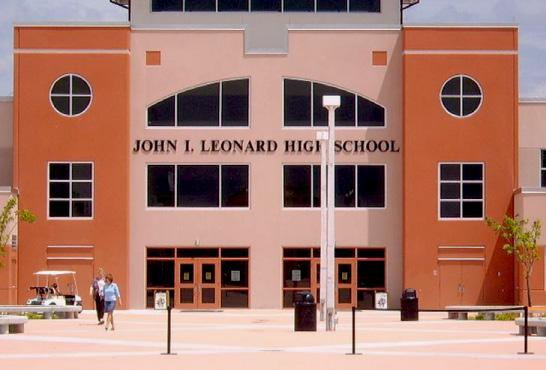

Prepare a “go kit” with personal items you cannot do without during an emergency. If you evacuate, allow at least twice the usual travel time. Shut off water and gas to home. Take photo ID and proof of address. Unplug or turn breaker off to hot water heater.
 John I. Leonard High School 4701 10th Avenue North, Greenacres, FL 33463
John I. Leonard High School 4701 10th Avenue North, Greenacres, FL 33463

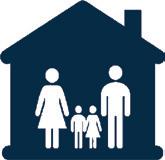
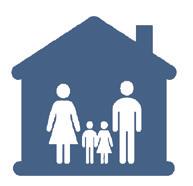
Make a family plan (personal, family, pet) . Make a list of family, friends and others who will be part of your plan. Consider a plan where each family member calls or emails the same friend or relative in the event of an emergency. A friend/relative who lives out of town, and out of the storm’s path may be the best choice.
• Decide where to ride out the storm and establish an out-of-state emergency contact. If you stay during a hurricane, check your family emergency supply kit for sufficient supplies and gather any missing or additional items that may be needed.
• If you plan to evacuate your home, make sure those in your support network know when and where you plan to go. Be sure someone locally has an extra key to your home.
• Build an emergency supply kit; (www.ready.gov/build-a-kit). If evacuating, prepare a Hurricane Evacuation Supply Kit.
• Know the disaster plan of your child’s school or day-care and know the expectation of your employer before and after a hurricane.
• Locate your water meter and electrical shut-off.
• Subscribe to free wireless emergency alerts such as the PBC DART app.
• Add emergency contact information in your cell phone. Obtain cell phone car chargers.
• Stock and store medications, and obtain extra prescriptions if necessary.
• Test generator (donotoperateduringstorm) .
• Purchase materials to protect windows. If you have shutters, be sure you know how to install/ operate and have all tools/equipment necessary to do so. Lubricate moving parts and test shutters annually.
• Watch and listen to local TV and radio for official instructions as they become available.
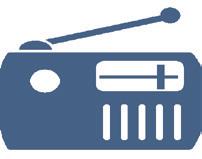

Fully charge portable electronic devices. Even if cell towers are down, cell phones can be used as a camera to document damage, provide light if power goes out, as well as keep you updated based on services you are subscribed to.
Verify that there is a sufficient supply of batteries for radios, flashlight and fans. Obtain a manual can opener in case of power loss. Limit the use of electronics until the storm has passed and power is stabilized. It’s important to turn off and unplug devices to prevent power surge damage and battery drain.
• Confirm arrangements for debris/vegetation removal with landscaping company or contractor.
• Establish contact list of board members/management company.
• Clear drainage systems including inlets, pipes, and outfall structures.
• Compile list of residents that may need assistance before and after a hurricane.
• Close storm shutters on common area buildings.
• Remove or secure loose items on common property. Secure/move outdoor objects or bring indoors.
• Close dumpster lids.
Water, one (1) gallon of water per person per day for at least five (5) days, for drinking and sanitation.
Mess kits, paper cups, plates, plastic utensils, and paper towels.
Matches/lighter in a waterproof container.
Can opener for food (ifkitcontainscannedfood)
Powdered drinks, instant coffee/tea
Flashlight and extra batteries, sternos, lanterns.
Whistle, to signal for help.
Battery-powered radio (orhandcrankradio) , TV, fan and a NOAA Weather Radio with tone alert and extra batteries for both.
Wrench or pliers to turn off utilities.
Fire extinguisher.
Dust mask, or cotton t-shirt, to help filter contaminated air and plastic sheeting and duct tape to shelter-in-place.
First Aid Kit, Face Masks (includesunscreen,insectrepellent)
Personal hygiene items:
• Soap, Sanitizer, Wipes
• Toothbrush, toothpaste
• Washcloths, towels, etc.
• Shampoo, deodorant
• Shaving kit
• Feminine items
Important family documents such as copies of insurance policies, identification and bank account records in a waterproof, portable container.
Cash or traveler’s checks and change.
Food, at least a fiveday supply of non-perishable food:

• Small containers of canned fruits, meats, vegetables and fish not requiring cooking
• Crackers, dry cereal, granola bars, bread
• Canned or bottled juices
• Nuts, peanut butter
• Dry Milk

Emergency reference material such as a first aid book or information from www.ready.gov
Local maps.
Water purification tablets or household chlorine bleach and medicine dropper, for disinfecting, dilute nine parts water to one part bleach. In an extreme emergency for drinking purposes, you can use 16 drops of regular household bleach per gallon of water. Do not use scented, color safe or bleaches with added cleaners.
Moist towelettes, garbage bags and plastic ties for personal sanitation.
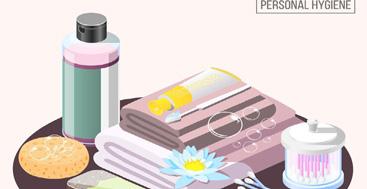
Sleeping bag or warm blanket for each person.
Complete change of clothing including long sleeved shirt, long pants and sturdy shoes.
Unique family needs, such as daily prescription medications, eye glasses, infant formula or diapers.

Paper and pencil.

Books, games, puzzles or other activities for children.
It is recommended to have two (2) emergency kits - one full kit at home and a smaller portable kit in your vehicle.
A baby needs one (1) gallon of water per day for up to five (5) days. Water is used to make formula, for drinking, and for sanitation.
Antibacterial wipes and hand sanitizer.
Baby food in pouches or jars and disposable feeding spoons.
Medications and infant pain reliever, such as ibuprofen or acetaminophen.
Diapers, wipes and diaper rash cream.
Pet Supplies:
• Pet food, bowls, extra water and a manual can opener.
• Collar with ID tag, harness or leash.
• A photo of you and your pet(s) together.
• Familiar items, favorite toys, bedding, and treats, etc.
Three-day supply of water per person (i.e., three-gallons per person).
Prescription and emergency medications; you must be able to take all medications by yourself.
Special-diet foods (e.g., snacks and juices for those with dietary restrictions or allergies) and basic snacks.
Bedding materials (e.g., pillows, blankets, sleeping bags, cots, air mattresses, etc.).
Comfortable clothing (at least two changes).
Baby food, formula, bottles, diapers, blankets, & clothes
Flashlight, extra batteries.


Ready-to-feed formula in single serving cans or bottles
A thermometer.
Baby blankets; extra baby clothes and shoes for older infant.
A portable crib; baby sling or carrier.
Small disposable cups.
Copies of vaccination records.
Toilet Paper.

• Important documents - pet registration information, vaccination documents and medical records.
• Sanitation-pet litter, litter box, newspapers, paper towels, plastic trash bags, etc.
• Crate or pet carrier.
Cellphone, with a battery-operated charger.

Radio with extra batteries and headphones
Important documents (identification, medical records, insurance information, deeds or leases, birth certificates and utility bills showing your home address).Eyeglasses, hearing aids, dentures.
Toiletries and personal hygiene itemsA thermometer.
Quiet games, books, playing cards, favorite toys, or other items for entertainment.
Special items for family members who are elderly or disabled.


• Listen to NOAA Weather Radio, local radio or TV stations for information and instructions.
• Stay inside a well constructed building or home if you have NOT been ordered to leave.
• If you are in a two-story house or multistory building, go to an interior first-floor room, such as a bathroom or closet. Take refuge in a small interior room, closet or hallway if conditions warrant.
• Keep a flashlight with you, DO NOT use candles.
• Stay away from windows and doors even if they are covered, and do not open.
• Unplug small appliances; turn off utilities as directed by authorities.
• Do not operate gas grill or portable generator.
• Stay off phones (both cell and land-lines) unless absolutely necessary, (voice calls increase traffic stress on local networks whichdelaysemergencycommunication) .
• Lie on the floor under a table of sturdy object should conditions worsen.
• Do not go outdoors until the storm has completely passed; winds calm down as the eye of the storm passes, although winds can change direction and return to hurricane force.
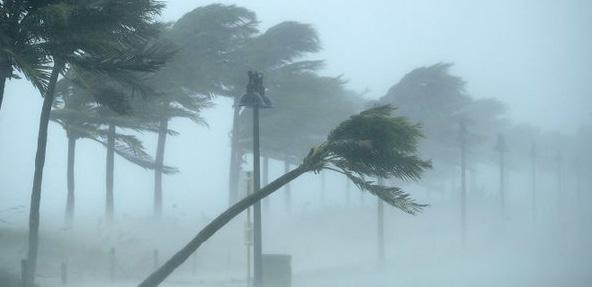
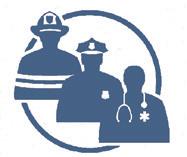
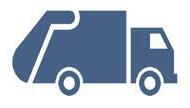
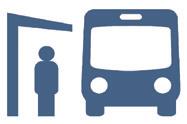
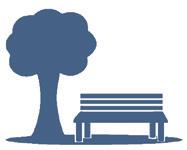
CITY OF GREENACRES FIRE RESCUE & PBSO DISTRICT 16
Response continues until it is no longer safe to be in the storm; personnel remains in stand-by mode. As calls for PBSO are received, they are prioritized and handled when it is safe for personnel to respond.
Waste collection services will stop when the SWA closes the landfills, approximately 12-24 hours prior to a storm. Visit SWA.org for additional information or call 561-697-2700 or 1-866-792-4636.
Once winds reach a sustained level of 40-45 mph, Palm Tran bus service will be discontinued. Visit Palmtran.org for additional information.
All parks will be closed after a hurricane until the park is free of debris and is safe to open to the public. Signs will be posted in the City announcing park openings and closings.
• If you evacuated, return only when local officials announce it is safe to do so.
• Do not drive unless absolutely necessary as storm debris may be on the roadways making driving hazardous and roads may be closed for your protection. If barricaded or flooded, turn around. Do not drive into flooded areas as the depth of the water is not always obvious and the condition of the road under the water may not be safe.
• When traffic lights/signals are not working due to power outages, the intersections should be treated as a four-way stop.
• Standing water may be electrically charged from underground or downed power lines; report downed lines to FPL or Public Safety.
• Look for fire hazards such as flooded electrical circuits or submerged appliances. Look for electrical system damage. If you see sparks or frayed wires, turn off the electricity at the main fuse box or circuit breaker.
• Check for gas leaks. If you smell gas or hear a hissing noise, open a window and leave quickly. Turn off the gas at the outside main valve, and call the gas company.
• Check for sewage and water line damage. If you think sewage lines are damaged, don’t use toilets, call a plumber.
• If water pipes are damaged, don’t use tap water, call the Palm Beach County Water Utilities Department.

• Check on neighbors after a storm to make sure they’re okay. Older adults are more at risk so just a moment of your time can mean a lot to someone who may need help.
• When it is safe to do so, assess any damages to your property (take photos to document) . Begin taking steps to minimize further damage from rain or standing water. If the street or parking area is flooded, check the inlets for debris and clear leaves and other vegetation, which will allow storm water to drain.
• Open windows/doors to ventilate and dry out your home and safely make immediate repairs that are feasible and will stop further damage.
• During power outages, running water and flushing toilets should be limited as lift stations could overflow. (If wastewater starts backing up inside the house, locate andremoveplugontheclean-outoutside thehouse.Reinstallafterpowerisrestored)
• Use flashlights in the dark, DO NOT use candles as the open flame is a potential fire hazard.
• Contact management company (if applicable) and arrange for clearing and debris removal.
• Call 9-1-1 for emergencies only.
The US Army Corps of Engineers implements the blue roof program on behalf of the Federal Emergency Management Agency (FEMA). Operation Blue Roof provides homeowners with free temporary blue plastic roof coverings for eligible homes damaged by a hurricane.
This program allows victims back into their homes so that they can return to their routines as quickly as possible. After a hurricane, registration sites will be established in the County. Registrants must fill out an application and sign a right-of-entry form.
The Corps will employ contractors to install plastic sheeting on homes of pre-qualified applicants. The sheeting is for free-standing homes, not apartments or commercial establishments. The sheeting cannot be installed on tile or flat roofs. No individual tarps will be available. For additional information call toll free 1-888-ROOF-BLU (1-888-766-3258).
Heavy gauge and extra-heavy gauge polyethylene waterproof tarps are available from hardware stores. They have sewnin edges for extra strength and rust-proof aluminium grommets. These blue tarps can be used temporarily on a damaged roof but cannot be relied upon to provide protection during a hurricane.
 BLUE ROOF PROGRAM
BLUE ROOF PROGRAM
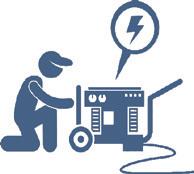

Using a generator incorrectly can lead to dangerous situations. According to the Centers for Disease Control, over 500 people die each year from accidental Carbon Monoxide (CO) poisoning. Many of these deaths could have been avoided if the following safety guidelines were followed:
• NEVER use a portable generator indoors; only use a portable generator outside and away from any doors, windows, or vents that could allow CO to enter your home. They should NOT be operated on the balcony of a multi-unit building.
• Do not use a portable generator in the rain; consumer-grade generators are not weatherproof and there is a risk of electrocution or shock.
• Follow the manufacturer’s instructions; plug appliances into heavy-duty extension cords and then plug the cords into the generator.
• Purchase a carbon monoxide detector and ensure the unit is functioning correctly.
• Never power the electric to the house wiring by plugging the generator into a wall outlet; this is called “back-feeding” and presents a serious risk to both utility workers and neighbors served by the same transformer.
• Maintain an adequate supply of fuel and store in specifically approved containers in a cool, dry, ventilated and secure area, away from appliances. Keep out of the reach of children.
• Turn generator off and let it cool before refuelling.
• Storm shutters can greatly impede firefighting operations and limit the ability to ventilate a structure of toxic smoke and gases, and prohibits safe evacuation of trapped victims.
• Firefighters are forced to use power saws and other heavy equipment to gain access to doors and windows blocked by storm shutters.
• Keeping your hurricane shutters up or closed all year as a way of protecting your home can actually attract burglars instead of deterring them because they may think that no one is home.
• Greenacres Property Maintenance Code, Florida Building Code, and National Fire Protection Life Safety Code prohibit shutters when there is no threat of a storm.


ALDI - Greenacres Location - 3401 Jog Road, Greenacres, FL 33467
BRAVO SUPERMARKET- 510000 Lake Worth Road, Greenacres, FL 33463
BRAVO SUPERMARKET- Woodlake Plaza - 5851 Lake Worth Road, Greenacres, FL 33463
PUBLIX - Atlantis - 4849 South Military Trail, Greenacres, FL 33463
PUBLIX - Riverbridge Center - 6790 Forest Hill Boulevard, Greenacres, FL 33413
TARGET - 5900 Lake Worth Road, Greenacres FL 33463
WALMART NEIGHBORHOOD MARKET - 3911 Jog Road, Greenacres, FL 33467
WALMART SUPERCENTER - 6294 Forest Hill Boulevard, Greenacres, FL 33415
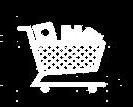

CUMBERLAND FARMS - 4771 S. Military Trail, Greenacres, FL 33463
CUMBERLAND FARMS - 5245 10th Avenue North, Greenacres, FL 33463
FOREST HILL MART - 6482 Forest Hill Boulevard, Greenacres FL 33463
SHELL - 6323 Lake Worth Road, Greenacres, FL 33463 WAWA - Greenacres Location - 6566 Lake Worth Road, Lake Worth
ACE HARDWARE - Riverbridge Center - 6770 Forest Hill Blvd, Greenacres, FL 33413
HOME DEPOT - 5750 Jog Road, Lake Worth, FL 33463
HOME DEPOT - 4241 Lake Worth Road, Lake Worth, FL 33461
LOWES - 103 So. State Road 7, Royal Palm Beach, FL 33411
My Water Provider is:
Phone: Other:
My Electric Provider is:
Phone: Other:
My Gas Provider is:
Phone: Other:
My Garbage/Debris Provider is:
Phone: Other:
My Phone Provider is:
Phone: Other:
My Local Shelter is:
Phone: Other:
My Local Store Powered by Generator is:
Phone: Other:
My Local Gas Station Powered by Generator is:
Phone: Other:


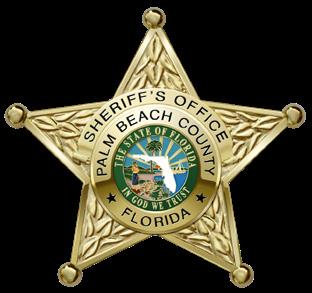

Animals
PBC Animal Care & Control 561-233-1200
Business Support
Small Business Administration
Contractor Licensing
Florida Dept. of Business & Professional Regulation
Florida Division of Workers Compensation
Emotional Support
800-827-5722

Recovery Assistance Federal Government
Recovery Information
FEMA (Federal Emergency Management Agency)
Schools
850-487-1395
800-742-2214
PBC Crisis Line/Referrals United Way of PBC 2-1-1 www.211palmbeach.org 561-375-6600
Fire/Medical/Police GREENACRES FIRE RESCUE Non-Emergency Service
800-333-4636 www.USA.gov
800-621-3362
PBC School Board (Emergency Line) 561-357-7500
Senior Assistance PBC Crisis Line 2-1-1 561-383-1112 www.211palmbeach.org
Shelter American Red Cross (Palm Beach Area) 561-833-7711
Traffic Signals PBC Repairs 561-684-4030
561-642-2129
561-688-3400
PBSO - DISTRICT 16 GREENACRES Non-Emergency Service 9-1-1
Food/Water Pick-up Location
PBC Emergency Management (Check local news for distribution sites)
Food/Mass Feeding
Salvation Army
Health Issues
561-712-6400
561-686-3530
PBC Health Department 561-840-4500
Housing Assistance
Dept. of Housing & Urban Development (Federal)
Insurance Complaints
Florida Department of Financial Services
Price Gouging
Office of Attorney General
202-708-1112
800-227-8676
866-966-7226
Transportation Palm Tran Bus & Transportation www.palmtran.org 561-841-4200 877-930-4287 Palm Tran ConnectionSvc. 561-649-9838 877-870-9849 Tri-Rail
800-874-7245 www.tri-rail.com
Utility Interruptions
AT&T (Bellsouth)
AT&T U-verse (Digital TV) (Residential) 877-737-2478 (Business) 866-620-6900 800-288-2020
Comcast Cable (Home of Xfinity) 800-266-2278
Florida Power & Light (FPL - Electric) (Power Outage) 800-468-8243 800-226-3545
PBC Water Utilities (Water/Sewer) 561-740-4600
Florida Public Utilities (Gas) 561-832-0872


ALERTPBC is Palm Beach County’s Emergency Notification System allowing you to opt in to receive notifications via phone calls, text messaging, email, and more based on locations you care about.
For additional information visit: https://discover.pbcgov.org/publicsafety/dem/Pages/Know-Your-Zone.aspx.
